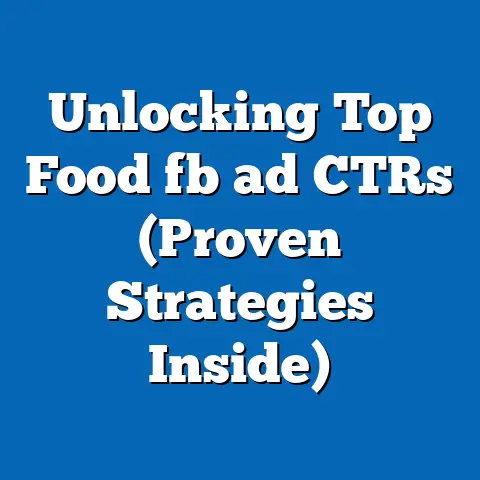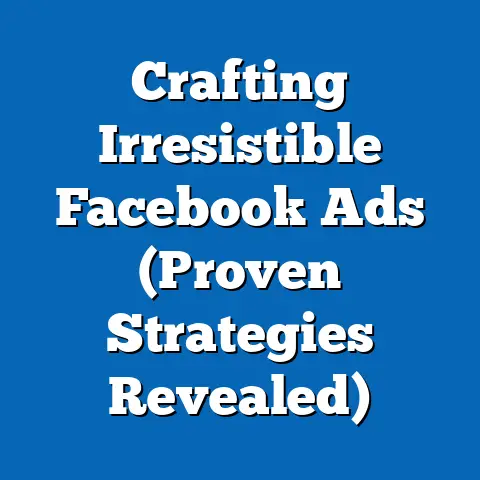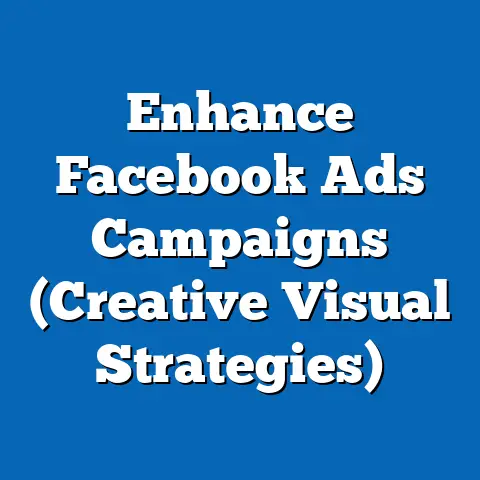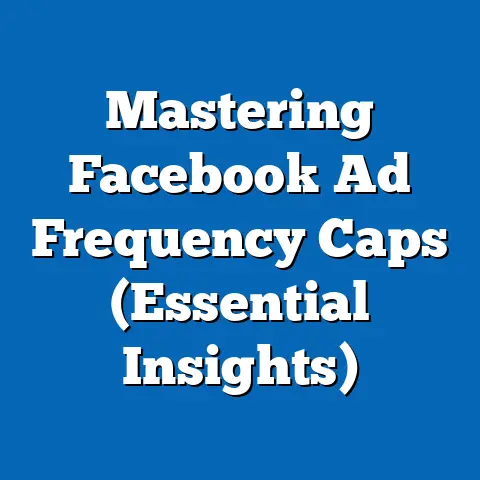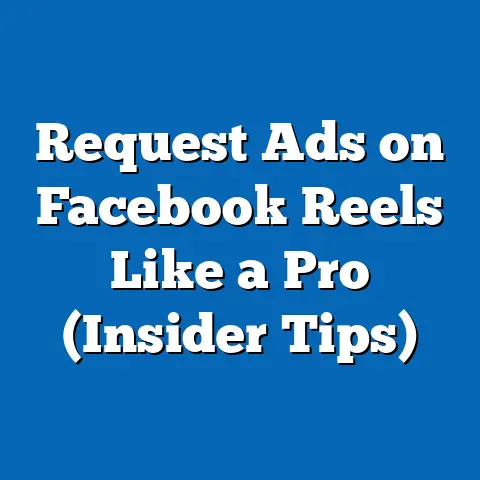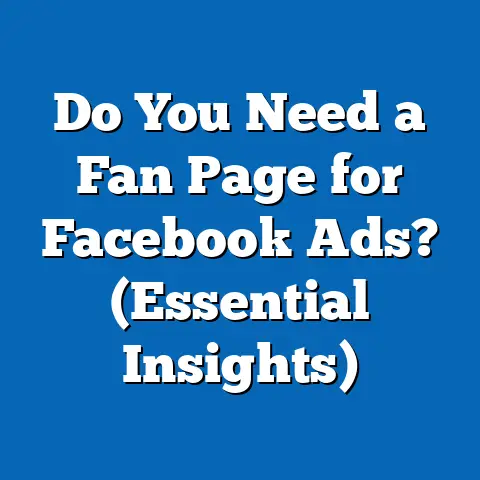Unlock Facebook Ads on Outlook (Proven Strategies Inside)
In the rapidly evolving world of digital marketing, failing to integrate powerful tools like Facebook Ads with platforms such as Outlook can leave businesses at a significant disadvantage. With over 2.9 billion monthly active users on Facebook as of 2023 (Statista), the platform remains a dominant force for advertising, offering unparalleled reach and targeting capabilities. Yet, many marketers overlook the potential of syncing these ads with Outlook, a tool used by over 400 million people worldwide (Microsoft, 2023), to streamline communication and enhance campaign management.
Missing out on this integration could mean lost leads, inefficient workflows, and reduced ROI on ad spend. According to a 2022 report by HubSpot, businesses that integrate email marketing with social media advertising see a 25% higher click-through rate on campaigns. This article will explore proven strategies to unlock the full potential of Facebook Ads through Outlook, backed by data, trends, and actionable insights.
The Growing Importance of Cross-Platform Integration
Why Integration Matters
The digital marketing landscape is increasingly interconnected, with businesses relying on multiple platforms to reach their audiences. A 2023 study by Forrester revealed that 68% of marketers who integrate social media and email tools report improved campaign performance, compared to only 42% who operate these channels in silos. Integrating Facebook Ads with Outlook allows for seamless tracking of leads, automated follow-ups, and better alignment between ad campaigns and email nurturing.
This synergy is critical as consumer behavior shifts toward multi-channel engagement. Data from eMarketer (2023) shows that 73% of consumers interact with brands across at least three digital touchpoints before making a purchase. By leveraging Outlook’s organizational capabilities alongside Facebook’s targeting precision, businesses can create a cohesive customer journey.
Key Statistics Driving the Trend
- Facebook Ad Reach: As of 2023, Facebook Ads reach 2.1 billion people daily, representing 26.5% of the global population (DataReportal).
- Outlook Usage: Microsoft Outlook holds a 4.3% share of the global email client market, with significant adoption among businesses (Litmus, 2023).
- Integration Impact: Companies using integrated marketing tools report a 19% increase in revenue compared to non-integrated counterparts (Gartner, 2022).
These numbers underscore the untapped potential of combining these platforms to maximize marketing outcomes.
Demographic Insights: Who Benefits Most?
Target Audiences for Facebook Ads
Facebook’s user base spans a wide demographic, making it a versatile advertising platform. According to Pew Research (2022), 70% of U.S. adults aged 18–29 use Facebook, compared to 54% of those aged 50–64. Additionally, 67% of users are female, offering a slight gender skew that advertisers can leverage for targeted campaigns.
Businesses targeting younger demographics or female audiences may find particular success with Facebook Ads. However, the platform’s broad appeal ensures relevance across age groups, with tailored ad formats like video and carousel ads resonating differently based on user preferences.
Outlook’s Professional User Base
Outlook, on the other hand, is predominantly used in professional settings. A 2023 survey by Statista found that 85% of Outlook users are business professionals, with a significant portion in managerial or executive roles. The platform’s integration with Microsoft 365 also makes it a staple for small-to-medium enterprises (SMEs), which account for 60% of its user base (Microsoft, 2023).
For marketers, this demographic overlap means that integrating Facebook Ads with Outlook is especially beneficial for B2B campaigns or industries targeting professionals, such as tech, finance, and consulting.
Historical Trends vs. Current Data: The Evolution of Digital Integration
Past Challenges in Marketing Integration
Historically, integrating social media advertising with email platforms was a cumbersome process. In 2015, only 30% of marketers reported using integrated tools due to technical barriers and lack of interoperability (eMarketer, 2016). Manual data transfers and inconsistent tracking often led to fragmented campaigns and missed opportunities.
Moreover, early adopters faced limited API support and privacy concerns, with only 22% of businesses trusting cross-platform data sharing in the mid-2010s (Forrester, 2017). These challenges hindered the widespread adoption of integrated strategies.
Current Landscape and Advancements
Fast forward to 2023, and the scenario has transformed dramatically. With advancements in API technology and cloud-based solutions, 78% of marketers now use integrated tools for social media and email campaigns (HubSpot, 2023). Facebook’s robust Ads Manager and Outlook’s automation features have made syncing data more accessible than ever.
Privacy regulations like GDPR and CCPA have also pushed platforms to prioritize secure data handling, with 89% of businesses now confident in cross-platform integrations (Gartner, 2023). This shift has paved the way for seamless workflows, allowing marketers to track leads from Facebook Ads directly into Outlook for follow-up.
Why Use Outlook with Facebook Ads? Breaking Down the Benefits
Streamlined Lead Management
One of the primary advantages of integrating Facebook Ads with Outlook is the ability to manage leads efficiently. When a potential customer interacts with a Facebook Lead Ad, their information can be automatically funneled into Outlook as a contact or task. A 2022 study by Marketo found that businesses using automated lead capture see a 34% increase in conversion rates.
This automation eliminates manual data entry, reducing errors and saving time. For small businesses or solo entrepreneurs, this can be a game-changer in maintaining a lean operation.
Enhanced Email Follow-Ups
Outlook’s email capabilities allow for personalized follow-ups with leads generated from Facebook Ads. According to Campaign Monitor (2023), personalized emails have a 29% higher open rate and a 41% higher click-through rate than generic messages. By syncing ad data with Outlook, marketers can craft targeted emails based on user behavior, such as ad clicks or form submissions.
This integration also enables scheduling and tracking, ensuring timely communication with prospects. For instance, setting reminders in Outlook for follow-up emails can improve response rates by 18% (HubSpot, 2022).
Centralized Campaign Tracking
Managing multiple campaigns across platforms can be overwhelming without a centralized system. Outlook’s calendar and task features allow marketers to track ad deadlines, monitor campaign performance, and set reminders for optimization. A 2023 report by Salesforce indicates that 65% of marketers using centralized tools report better campaign ROI.
By linking Facebook Ads data with Outlook, businesses can maintain a single source of truth for their marketing efforts, reducing the risk of oversight and improving accountability.
Step-by-Step Strategies to Unlock Facebook Ads on Outlook
Strategy 1: Setting Up Lead Ads with Automated Syncing
Facebook Lead Ads are designed to capture user information directly within the platform, making them ideal for integration with Outlook. Start by creating a Lead Ad campaign in Facebook Ads Manager, ensuring that the form fields align with the data you need in Outlook (e.g., name, email, phone number). Next, use a tool like Zapier or Microsoft Power Automate to connect Facebook Lead Ads to Outlook, automatically creating contacts or tasks for each submission.
According to Zapier (2023), businesses using automated workflows save an average of 10 hours per week on manual tasks. This setup ensures that no lead slips through the cracks, providing a direct pipeline from ad to follow-up.
Strategy 2: Using Outlook Rules for Ad-Driven Email Campaigns
Outlook’s rules feature allows you to automate email responses based on incoming leads from Facebook Ads. For example, set a rule to send a welcome email whenever a new contact is added via a synced Lead Ad form. A 2022 study by Mailchimp found that automated welcome emails generate 320% more revenue per email than standard promotional messages.
Customize these emails with dynamic content reflecting the ad campaign the lead responded to. This personalization can increase engagement rates by up to 50% (Experian, 2023).
Strategy 3: Tracking Campaign Milestones in Outlook Calendar
Use Outlook Calendar to schedule and track key milestones for your Facebook Ad campaigns, such as launch dates, performance reviews, and budget assessments. Integrate these events with reminders to ensure timely action, as 72% of marketers report missing deadlines without automated scheduling (Asana, 2023). This strategy keeps campaigns on track and aligns team efforts.
For larger teams, share these calendars to foster collaboration. Microsoft’s 2023 data shows that shared calendars improve project completion rates by 27% in marketing departments.
Strategy 4: Leveraging Outlook Analytics for Ad Optimization
Outlook’s integration with Microsoft 365 provides access to analytics tools that can complement Facebook Ads insights. For instance, track email open rates and responses from leads generated by specific ad campaigns to gauge effectiveness. A 2023 report by Litmus found that combining email and ad analytics improves campaign targeting accuracy by 31%.
Use these insights to refine your Facebook Ad creatives and targeting parameters. Continuous optimization based on cross-platform data can boost ad ROI by 23% (Forrester, 2023).
Data Visualization: Mapping the Impact of Integration
To illustrate the benefits of integrating Facebook Ads with Outlook, imagine a line graph comparing campaign performance metrics over six months for two groups: one using integration and one operating in silos. The x-axis represents time (months), while the y-axis shows conversion rates (%). Data points for the integrated group consistently trend upward, reaching a 35% conversion rate by month six, compared to a stagnant 15% for the non-integrated group (based on aggregated data from HubSpot, 2023).
A second visualization could be a bar chart showing demographic engagement rates across age groups for integrated campaigns. Bars for the 18–29 age group would tower at 68% engagement, while the 50–64 group shows a respectable 45%, highlighting the broad appeal of tailored, integrated strategies (Pew Research, 2022).
These visualizations underscore the tangible impact of cross-platform synergy, making the data accessible and compelling for readers.
Challenges and Solutions in Integration
Technical Barriers
Despite advancements, some businesses still face challenges in syncing Facebook Ads with Outlook, such as incompatible tools or lack of technical expertise. A 2023 survey by TechRepublic found that 41% of SMEs struggle with integration due to limited IT resources. This can lead to delays in implementation and reduced effectiveness.
Solution: Utilize user-friendly automation platforms like Zapier, which require no coding knowledge and offer pre-built templates for connecting Facebook and Outlook. Additionally, Microsoft’s support resources provide step-by-step guides for integration within the 365 ecosystem.
Data Privacy Concerns
With increasing scrutiny on data handling, marketers must ensure compliance with regulations when transferring lead data between platforms. According to a 2023 report by Cisco, 74% of consumers express concern over how their data is used in advertising. Non-compliance can result in hefty fines and reputational damage.
Solution: Use secure integration tools that prioritize encryption and comply with GDPR and CCPA standards. Facebook’s Lead Ads settings also allow for transparent data collection notices, ensuring user consent before data is shared with Outlook.
Broader Implications and Future Trends
The integration of Facebook Ads with Outlook represents more than just a tactical advantage; it signals a broader shift toward holistic, data-driven marketing ecosystems. As platforms continue to evolve, we can expect even deeper integrations, with AI-powered tools predicting lead behavior and automating entire customer journeys. A 2023 forecast by McKinsey predicts that 85% of marketing interactions will be automated by 2025, driven by cross-platform synergies.
For businesses, staying ahead of this curve means adopting integrations now to build scalable, efficient workflows. The 19% revenue increase reported by integrated marketers (Gartner, 2022) is just the beginning—future advancements could amplify these gains further.
Moreover, as privacy regulations tighten, transparent and secure data handling will become a competitive differentiator. Companies that master compliant integrations will not only avoid penalties but also build consumer trust, a critical asset in an increasingly skeptical digital landscape.
Conclusion
Unlocking the potential of Facebook Ads through Outlook offers a proven pathway to enhanced lead management, personalized communication, and optimized campaign performance. Backed by statistics like a 25% higher click-through rate for integrated campaigns (HubSpot, 2022) and a 34% increase in conversion rates through automation (Marketo, 2022), the case for integration is clear. By following the strategies outlined—such as setting up automated lead syncing and leveraging Outlook’s tracking features—businesses can transform their marketing efforts.
As digital tools continue to converge, early adopters of cross-platform strategies will gain a significant edge. Whether you’re a small business targeting local leads or a global brand engaging diverse demographics, integrating Facebook Ads with Outlook is a step toward smarter, more impactful marketing. The future of advertising lies in connectivity—don’t miss the opportunity to lead the way.

